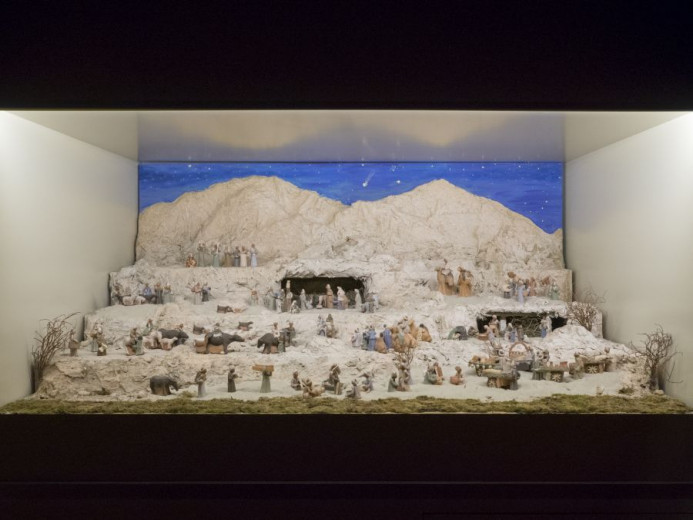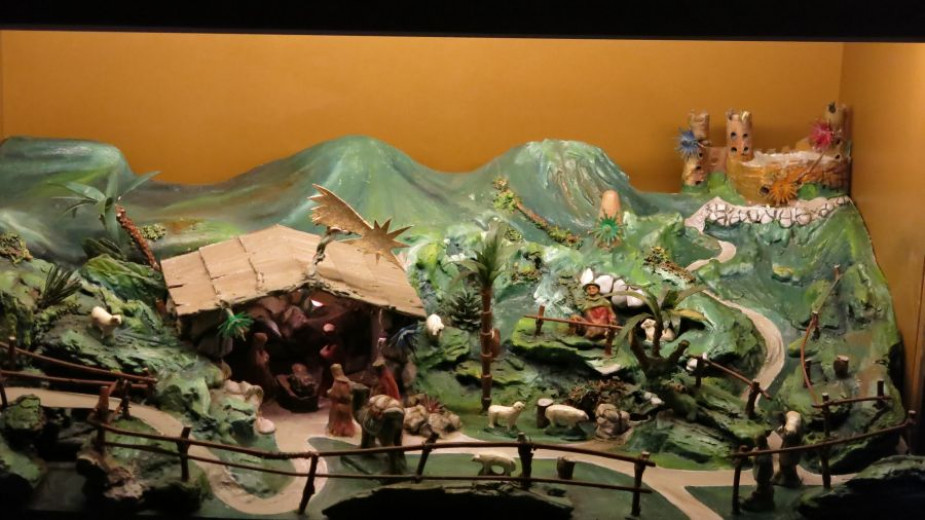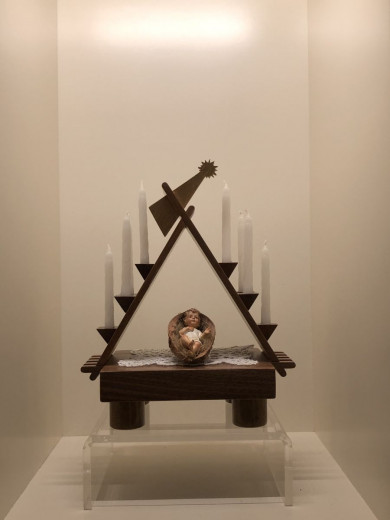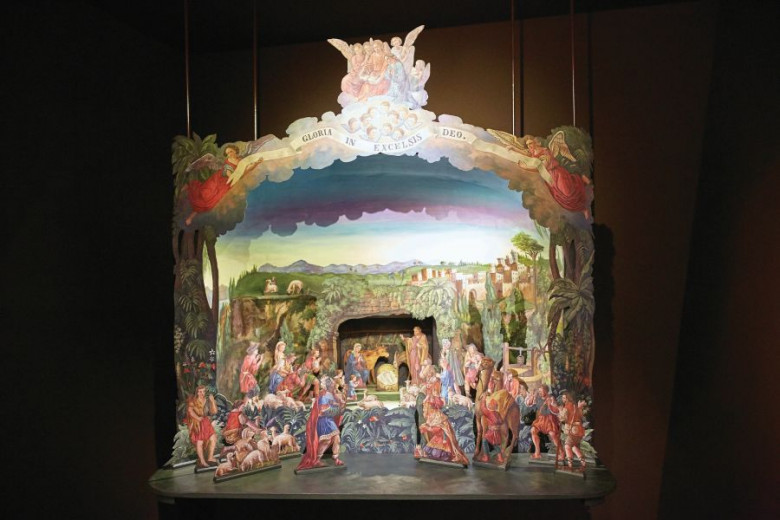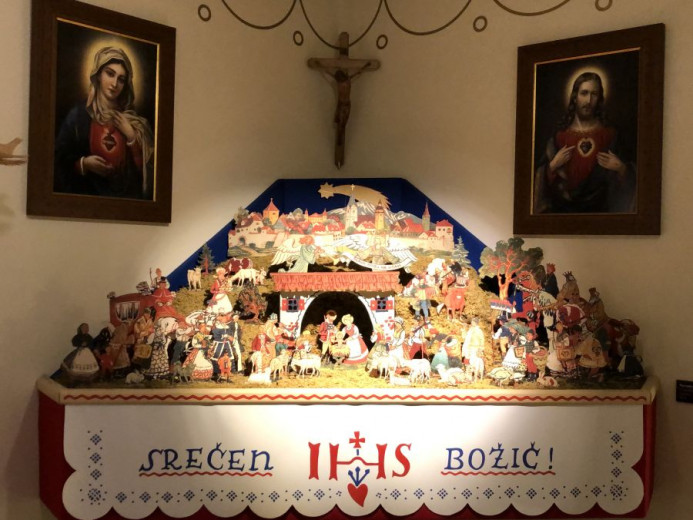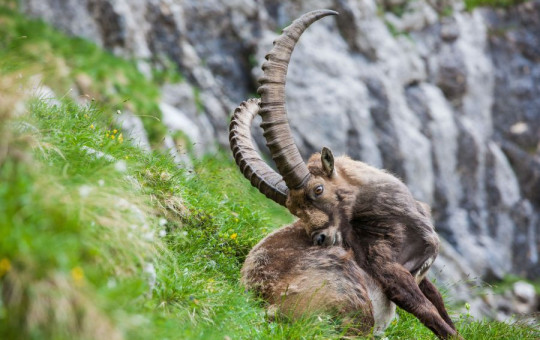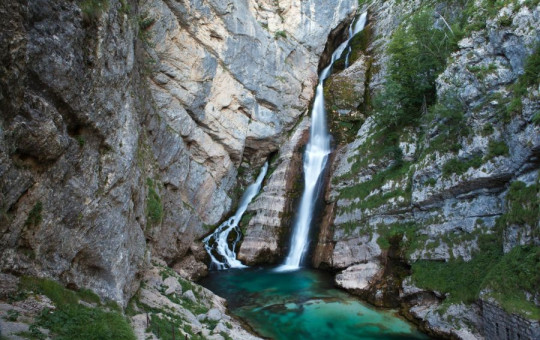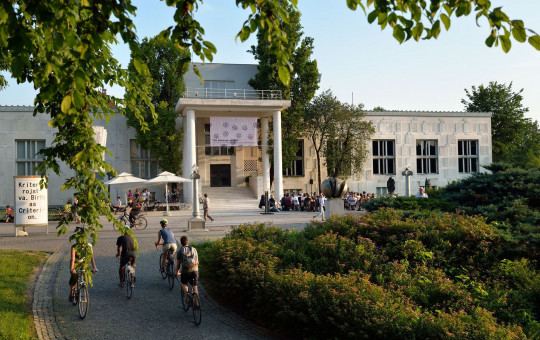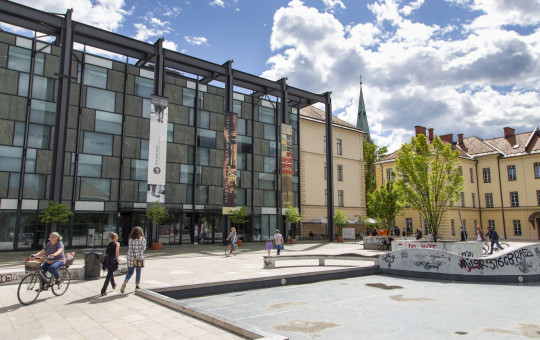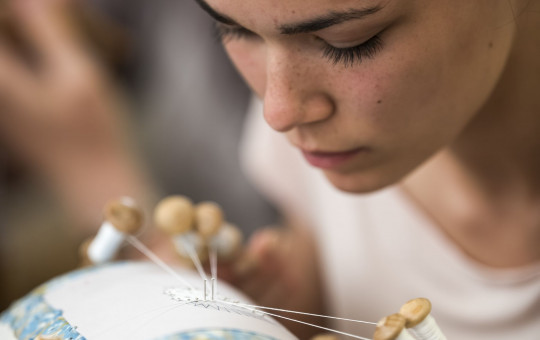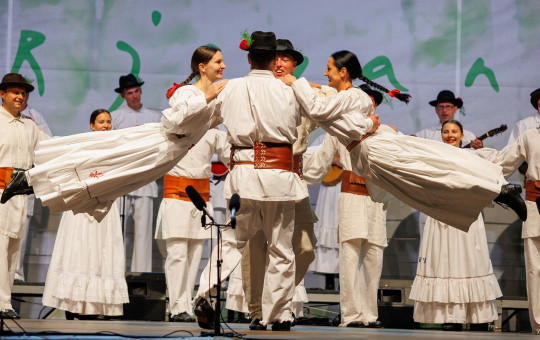Nativity scenes can be viewed throughout the year at the Brezje Nativity Museum. It is a member of the Community of Museums of Slovenia, and boasts a rich collection of Nativity scenes from all over the world. The collection numbers more than 500 scenes from 82 different countries. The museum offers a true geographical stroll through the regions of the world, as reflected in seasonal displays.
Christmas time is something special. We become more introverted, focused on ourselves and our families and friends, enjoying their company at the end of the year. The hectic pace of life we constantly face is halted, or at least it seems so. This is a time of peace. During these days in Slovenia people put up Christmas trees and Nativity scenes, and the aromas of seasonal home cooking waft out of kitchens. Nativity scenes or Christmas cribs, which are very common in Slovenian homes, are set out relatively early, and many people devote great attention to them. The most typical Slovenian Nativity scene was at one time the corner crib, frequently placed in the holy corner. Nowadays the most widespread scenes are made of plastic, which people still place in a corner, on a table or under the Christmas tree. Modern Slovenian Nativity scenes can also be made of cloth, stone or clay.
Creation of the museum
The collection of Nativity scenes at Brezje has been expanding ever since 1990, when Father Leopold Grčar started it. The renovation of the space now occupied by the museum began in 2014, and the collection is spread through rooms in a former work building, the monastery barn. The Brezje Nativity Museum opened in December 2016, but the collection is continuously expanding.
People who found out about the museum started bringing Nativity scenes to Brezje from all over Slovenia. The collection was also supplemented by missionaries who brought Nativity scenes from all parts of the world.
In the time that the museum has been open, the collection has been enhanced by some incredible finds in Slovenia. Many of them have been painstakingly restored and thus saved from destruction. The museum and Nativity scene collection are carefully watched over by Father Dr Robert Bahčič.
In June 2018 the Ethnographic Museum entered the Nativity scenes in the register of cultural heritage. These are therefore not just important as a representation of Jesus’s birth, but also as works of folk art from individual regions. The method of creation and the materials used in the Nativity scenes indicate the characteristics of the areas they come from.
In the museum
Arriving in front of the museum, you are greeted by the words of St Francis of Assisi, who first set up a Nativity scene in 1223, "Good day, good people", the greeting welcoming you into the museum. The museum, which has been superlatively thought out, reminds you right from the outset of the greatest values – freedom and peace among nations. Seventy three-dimensional doves, made of lace by seventy lacemakers from seventy Slovenian towns, represent the seventy years of peace since the end of the Second World War.
On the walls you can view the tools that were used at one time to make Nativity scenes, and you can learn something of the history of these scenes in general and of their history in Slovenia in particular.
Nativity scenes of various sizes are set out attractively in display cases and placed by the geographical region from which they came. The first section of the museum shows Slovenian Nativity scenes.
The museum even includes a Nativity scene designed by Jože Plečnik (1872-1957), the most outstanding Slovenian architect. The Nativity scene of Maksim Gaspari (1883-1980), who was a Slovenian painter, is very significant for the preservation of Slovenia’s cultural heritage. Also of note is the Nativity scene of Leopold Layer (1752-1828), another Slovenian painter, whose scene was created in 1828 and represents his last work. The museum also houses one of the oldest preserved Nativity scenes. This is the convent Nativity scene from Velesovo, which dates back to the middle of the 18th century.
Moving on, you can then marvel at Nativity scenes from Eastern and Central Europe, Latin America, the Mediterranean, Africa and Egypt. The Nativity scenes on display were made in different periods and are of a variety of materials. The scenes are made of wood, paper, stone, clay, shells, cloth, straw – and even dried banana leaves. It is this diversity and the creativity of the makers that is so inspiring.
The Egyptian Nativity scene presents an interesting symbiosis: the figures were made by a Muslim, and the landscape by a Slovenian. The Egyptian Nativity scene was made between 1982 and 1984 by the sculptor Mohamed Alam. The scene is set in a desert by the Nile, in the Valley of the Pharaohs, a land of sand and rock. But it was sculptor Jože Toenig of Domžale who crafted the landscape, after photographs of the River Nile. The valley by the Nile is green for three harvests, and then becomes a desert.
At the end of the museum you return to the beginning, where there is a copy of the Nativity cave fresco of 1223 created by St Francis of Assisi.
The museum is truly something special. It brings together in one place an assemblage of different cultures and different nationalities of Nativity scene makers. And all these people shared a love of the Nativity scene.
Museum visitors, both Slovenian and foreign guests, are inspired by the museum, as can be seen from the visitors book. There are many entries in the book, quite a few in children’s handwriting and many in foreign languages, including Korean, Spanish, Portuguese and Russian. You can read about their gratitude at being able to view the collection of Nativity scenes that is gathered here.
The company Romar d.o.o., which manages the museum, and its friendly representative Dr Andreja Eržen Firšt, are already planning an expansion. They want to add a floor to the museum, and in this way offer displays of Nativity scenes from various regions of different countries.
The highest visitor numbers are naturally in December, but the museum has a steady stream of visitors all year, being open every day except Mondays. In December we recommend visiting the museum on weekdays. Large groups need to give prior notice to be sure of a guided tour, which is recommended given the rich content related to the scenes on display. On the weekend the museum can often be too full, and you may even have to wait for entry.
-
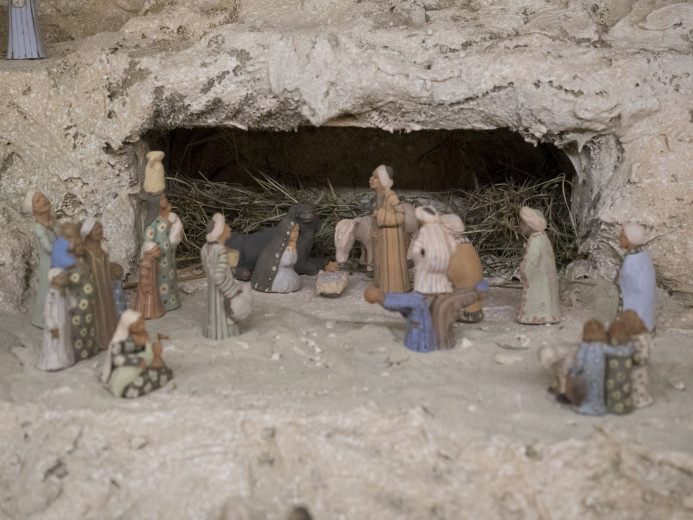
Egyptian Nativity scene. Sculptor: Mohamed Aam. Landscape crafted: Jože Toenig. Photo: Brezje Nativity Museum archives
-
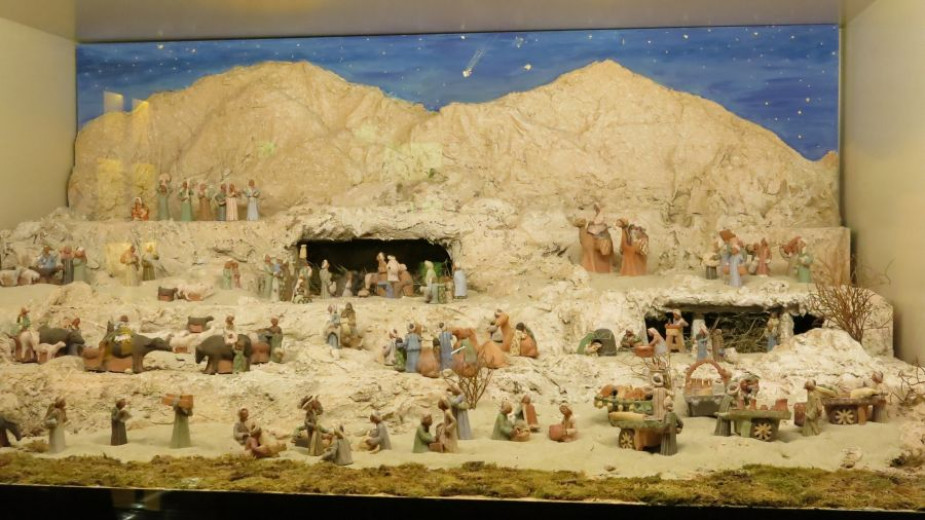
Egyptian Nativity scene. Sculptor: Mohamed Aam. Landscape crafted: Jože Toenig. Photo: Tinkara Zupan/STA
-
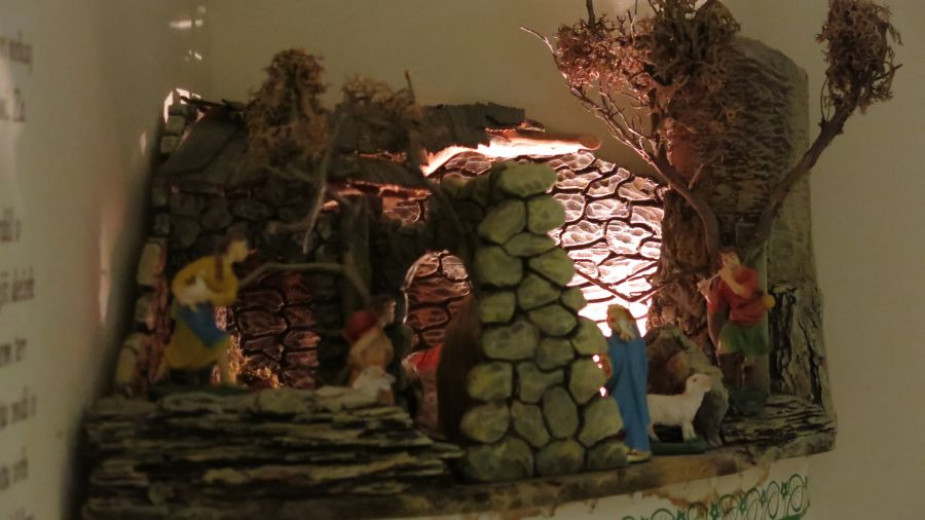
Nativity scene. Photo: Tinkara Zupan/STA
-
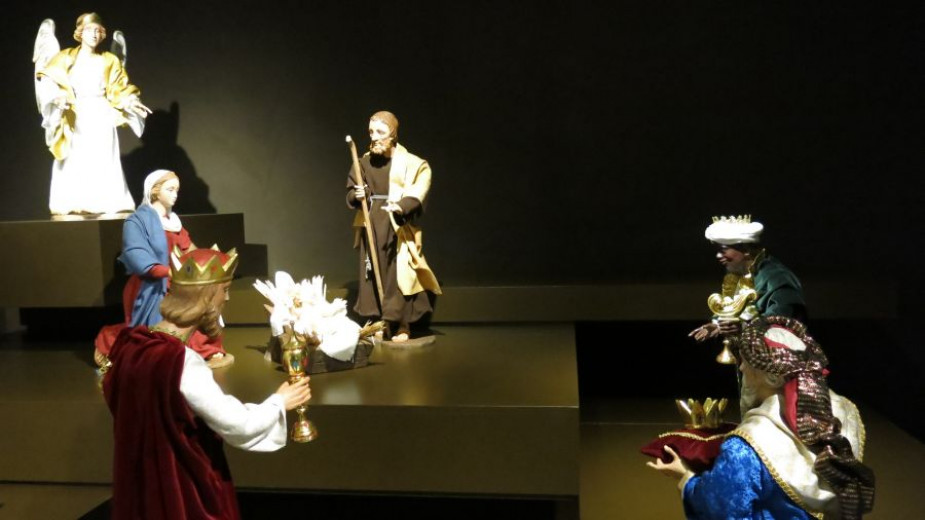
Bavarian nativity scene. Family Klucker. Oberammergau, Bavarian. 2015. Photo: Tinkara Zupan/STA
-
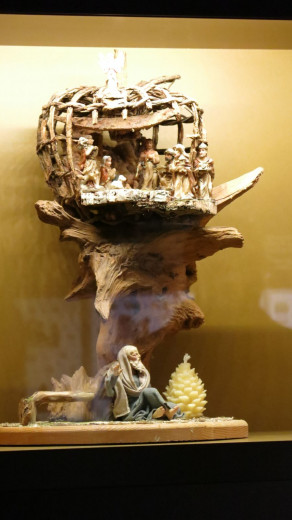
History of salvation. Walter Govekar. Klagenfurt, Austria. Around 2000. Photo: Tinkara Zupan/STA
-
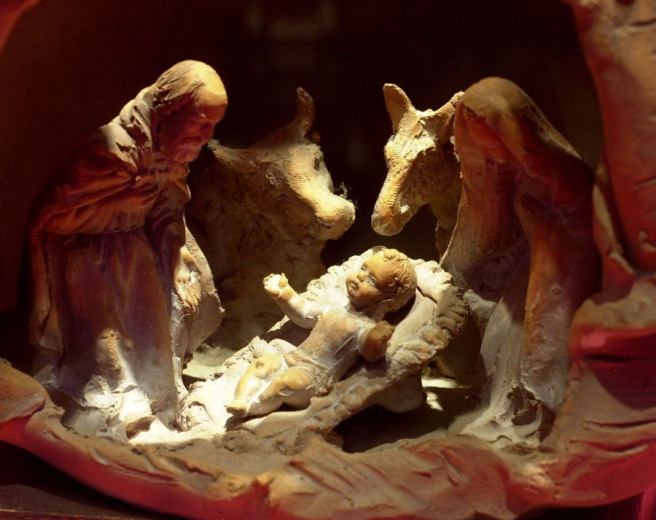
Nativity scene. Photo: Tinkara Zupan/STA
Date: 19. December 2024
Time to read: 3 min

